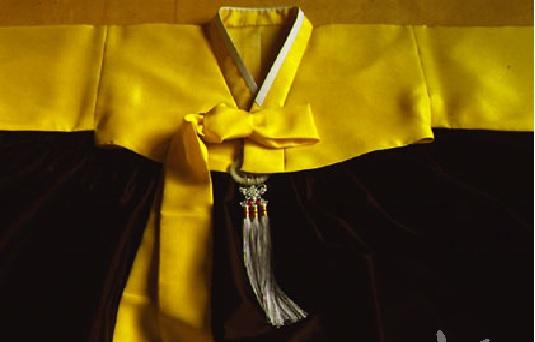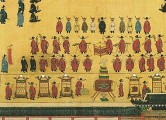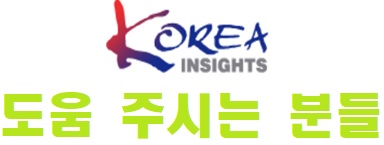-

The hanbok, Korea's national costume, reflects the culture and climate of the Korean peninsula. The woman's hanbok is composed of a chogori, a bolero-like blouse, and a skirt called a ch'ima. The men's hanbok consists of a longer chogori and baggy trousers called paji. Like much of Korea's art, the hanbok is characterized by subtle curves, flowing lines and plenty of blank spaces. Traditionally they have been made of plain fabrics. Any decorations are usually sedate borders at the cuffs and hem, though in modern times some people have been known to wear hanbok decorated with loud prints.
It is no coincidence that the hanbok covers almost the entire body. Confucianism has dominated the Korean consciousness for much of the country's history. Integrity in men and chastity in women were the foremost social values of the Choson Dynasty which ruled the peninsula from 1392 to 1910. The hanbok vividly reflects these traditional values, and the various types of hanbok reflect the social status and circumstances of the wearer. The long white top'o overcoat made of fine hemp fabric has long symbolized the dignity and reserve of the traditional gentleman-scholar. Noblewomen of the Choson period wore long coats called chang-ot draped over their heads whenever they went out, because it was considered unseemly for a woman of good breeding to show her face in public.Colors also indicated social status and personal circumstances. Commoners dressed in white except for seasonal festivals or joyous occasions when they dressed in hanbok of bright primary colors. The ruling class, on the other hand, often wore primary colors because they were flattering. Unmarried women traditionally wore yellow chogori and red ch'ima, an attractive combination. After marriage, the color of a woman's ceremonial costume indicated her husband's rank at court. Interestingly the Korean word for clothes, ot[], resembles a person, reflecting perhaps a belief that the clothes do, in fact, make the man or woman.
위 URL을 길게 누르면 복사하실 수 있습니다.
<저작권자ⓒ코리아인사이트 & www.koreainsights.co.kr 무단전재-재배포금지>
BEST 뉴스
댓글0
 위로
위로







